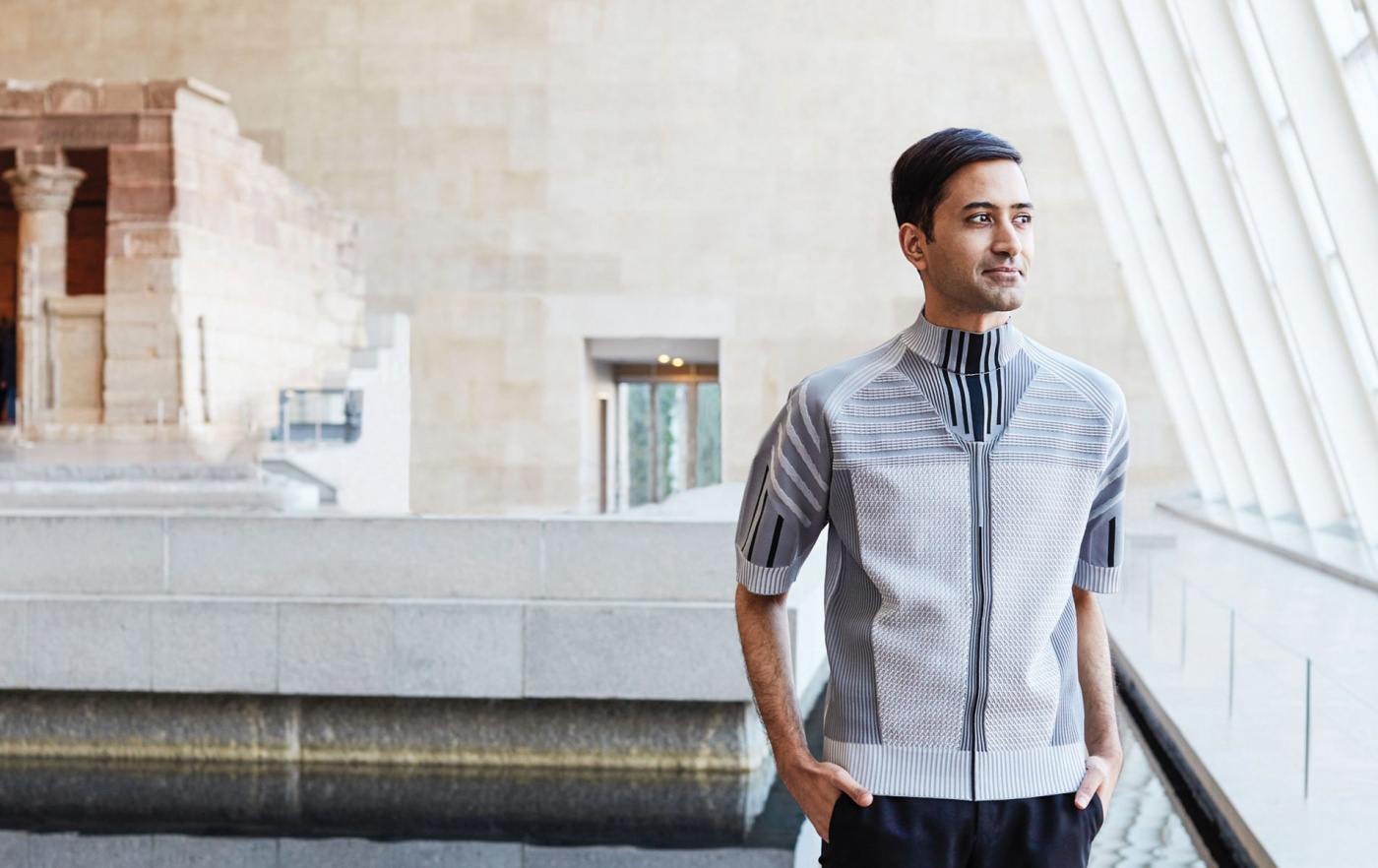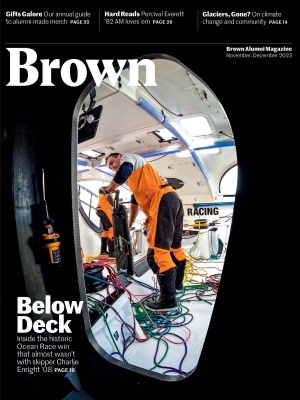Curatorial Instincts
The rapid museum-world rise of Shanay Jhaveri ’07
Shanay Jhaveri ’07 had his devotion to art hardwired at birth. Still, the new head of visual arts at the Barbican in London, Europe’s largest multi-arts venue, never thought he’d become a curator.
His rapid ascent to the summit of the museum world began in Mumbai, where he was born into a family of art collectors. Following in the footsteps of an aunt, Amrita Jhaveri ’91, he arrived in Providence in 2003.
Jhaveri concentrated in art semiotics and the history of art and architecture. It was a transformative time. “I had the very good fortune of studying with some incredible professors,” he says. “They exposed me to critical and post-colonial theory—ideas I had never been familiar with.”
The impact was not just intellectual. “Many of my enduring friendships come from that time,” he says. “Brown really helped me become the person I’m trying to be. It started me along that journey.”

After graduation, Jhaveri enrolled in a PhD program at the Royal College of Art in London. While working on a doctorate in modern Indian art, he became increasingly interested in combining his academic research with curatorial practice.
His breakthrough exhibition came in 2013, at the Palais de Tokyo in Paris. Jhaveri displayed the work of non-Western women artists who had lived and worked in the French capital in the early years of the twentieth century.
“That was a really significant moment for me,” he says. “It allowed me to think, not just discursively, but by actually putting objects together in a space.”
In 2016, Jhaveri moved to the Metropolitan Museum of Art in New York City, where he was the museum’s first assistant curator of South Asian Modern and Contemporary Art. His goal: expanding the museum’s collection of modern and contemporary works from the Indian subcontinent.
Then, last fall, Jhaveri crossed the Atlantic once again, moving into an apartment in the iconic Barbican estate, a landmark of Brutalist architecture on the edge of London’s financial district. He took the reins as head of visual arts at the internationally renowned Barbican Centre.
Jhaveri brings a unique approach to the vision of the Barbican’s first director, Henry Wrong, who, in the 1980s, imagined a program that was modern, exciting, and international. “I felt that I could very much bring my priorities and commitments to those ideals,” says Jhaveri.
Part of Jhaveri’s vision is to commission site-specific works that respond to the building’s unique architecture. His first project, a work by the Indian sculptor Ranjani Shettar, opened in September.
Above all, it is the Barbican’s civic utopian mission that drives Jhaveri. “The immense belief,” he says, “that we need art to live—that the arts are an intrinsic part of life.”




